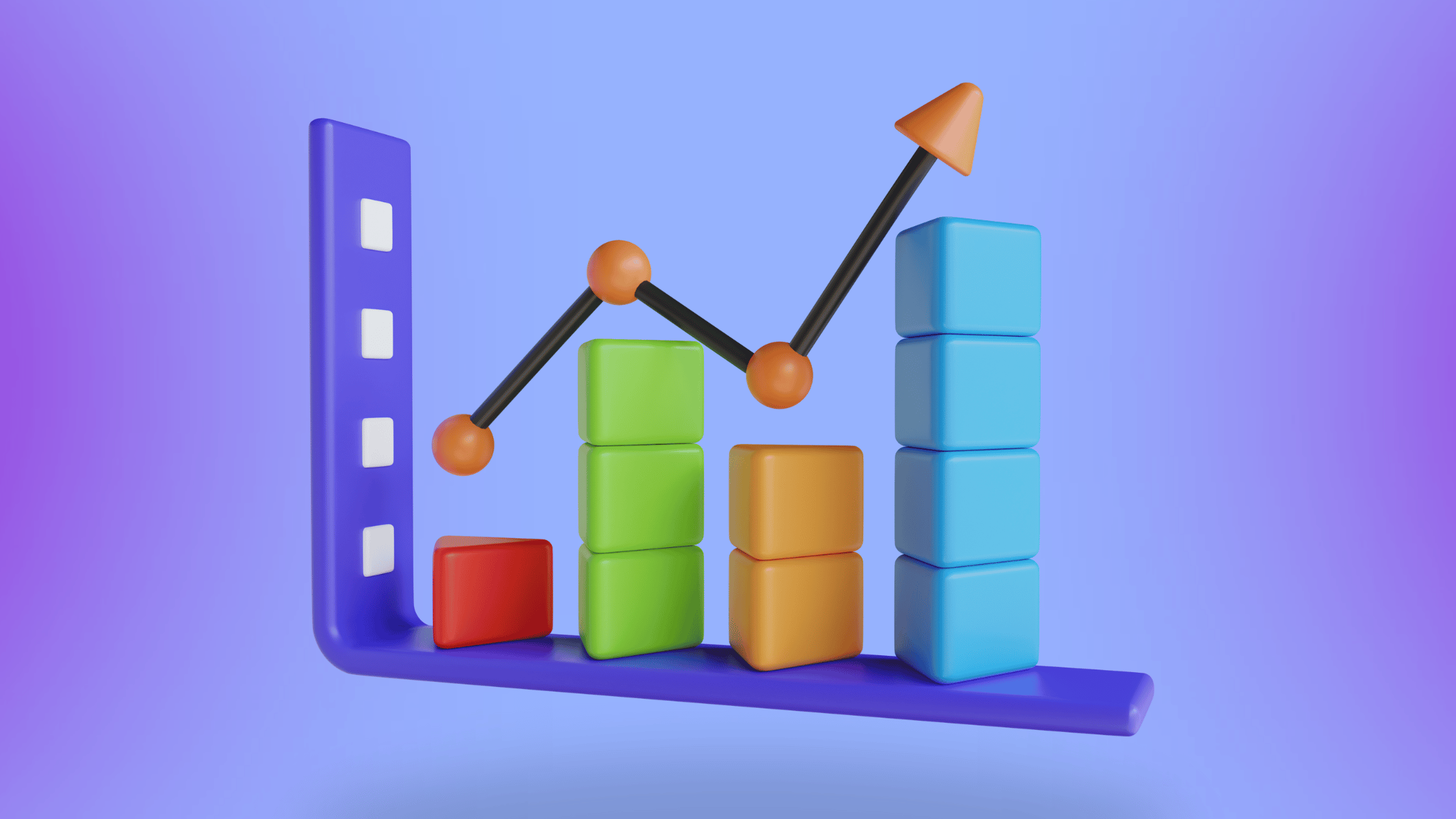Social listening provides you with insights into customer behaviour and preferences. It is the raw customer data that gets converted into insights by using sophisticated tools and techniques. However, what you achieve with the data and insights proves to be the differentiating factor between you and your competitors!
As per a consumer survey by Curalate, 76% of US consumers purchase the products they see in social media posts of brands. Also, 65% of the consumers ended up buying products they were not interested in due to a social media post.
Social media has a huge influence on consumer mindset. So, as a brand owner, you can use social media data to predict sales, future trends, and product demands!
Also, by using customer data and trends, you can predict customer responses in different scenarios. Data prediction is not a new terminology. Yet, many brands don’t use it as much as they should.
Let’s take the example of the stock market. Experienced traders use historical data and trends to predict the future moves of the stocks. Similarly, brands can use social listening and predictive analytics to forecast future trends and customer responses. We will discuss more about how to use predictive analytics in marketing in the below sections!
What is Predictive Analysis?
Predictive analysis is the process of predicting future events and trends using historical data. Incorporating predictive analytics in social media marketing will allow you to predict threats and opportunities in the future. Statistical modelling, machine learning, and data mining methods are employed to find patterns in the data.
For example, companies must have a steady cash flow to regulate their ongoing business operations. They can use their previous financial statements and data to identify future demands, trends, and inventory requirements. So, with predictive analysis, they can forecast the future financial needs of their organisation.
Also Read : The Path To Unified Customer Experience: Strategies And Technologies For Brands
Why is Predictive Analysis Important in Marketing?
Predictive analysis allows you to predict likely events that can assist or disturb your marketing events in the future. By leveraging these insights into your marketing strategies, you can make optimum use of time and resources. Integration of predictive marketing analytics will enhance your decision-making ability and planning.
Predictive analysis allows you to predict consumer trends in the future. The data from different sources is analysed to identify customer sentiments regarding your products/services. Contextual data like geographical location, weather conditions, festivals, etc. can be integrated to identify the emerging trends in the market.
With predictive analytics, you can determine the brand messaging that can resonate with your target audience. By analysing their behavioural patterns, you can predict the marketing channels they are most comfortable with while interacting with your brand.
The predictive analysis highlights the weaknesses and strengths of your communication channels by identifying trends in audience disengagement. You can optimise your channels and bring more engagement by optimising your content. This will ultimately reduce customer churn and help you to retain your customers.
Role of Social Listening in Prediction
Social listening and predictive analytics complement each other. Without social listening, you cannot obtain real-time data and insights which are the pillars of predictive analysis.
Brands no longer use social listening only to track brand mentions and maintain their online image. They want to implement the latest technologies like AI and predictive analysis to develop their customer intelligence.
Many researchers agree that predictive analysis can be the next big thing for marketers. With social listening, you can predict the next moves of your customers. It also analyzes how customer preferences and needs have evolved in a specific period.
So, with social listening capabilities, you can easily identify the topics and trends that are gaining momentum. By analysing these topics and trends, you can easily prepare yourself for future changes.
Anticipating Trends with Social Listening
Social listening lets you know more about your target audience. By analysing their conversations in real time, you can identify the trends that are relevant to your brand. You can track competitor strategies and uncover the most talked-about topics on the internet with social listening.
Social listening also offers data and insights on influencers and trends. For example, the rapper Drake released a video music track called ‘Hotline Bling’ in 2015. In the following months, the song became one of the greatest hits and amassed over 720 million.
An apparel brand Yete anticipated that this song was going to be a hit. So, they released a sweater named ‘Hotline Bling’ and all the sweaters got sold in no time. They used social media data to predict the emerging trend and cashed on it big time!
By analysing customer conversations, you can retrieve the insights that can shape your marketing strategies. Here are a few ways to anticipate trends with social listening:
1. Identifying Early Signals
With social listening tools, you can set up alerts for specific topics, keywords, and phrases. You can identify the trending topics and popular hashtags used on different social platforms.
Monitoring social media platforms, blogs, forums, and other online channels, helps you uncover potential issues with your products or services. These issues can be the cause of a future social media disaster or crisis. So, by using social listening, you can identify early signals and use them to your advantage.
2. Tracking Viral Conversations
Some conversations on social media go viral. For instance, when a celebrity or sportsperson gives a witty or savage reply to a social media bully, fans retweet the conversation instantly. Many brands use these conversations creatively to grab the attention of their audience.
Likewise, viral conversations can also help brands to rectify their mistakes and preempt a crisis. You can use social listening and predictive analysis for improving customer experience.
For example, an ongoing complaint can agitate the customers. To add fuel to the fire, your customer executive may speak rudely with some of them. If their conversations happen on a call or in person, the customer may record the same and share it on various social media platforms.
Such events not only tarnish your social image but also create an irreparable dent in your brand reputation. Social listening allows you to track these conversations in real-time. By taking the required action at the right time, you can minimise the damage to your online reputation.
3. Monitoring Emerging Hashtags
When you monitor emerging hashtags and topics consistently, it gives you an opportunity to be a part of the conversation. By participating in trending discussions and topics, you can increase your brand’s online visibility.
With social listening, you can set alerts for hashtags that are relevant to your business. By tracking these hashtags, you know when they gain momentum or lose traction in social media. You can include popular hashtags in your campaigns to promote your products and highlight your services.
Predicting Consumer Behaviour
You can use social listening to predict what the response of the customers will be to your upcoming products/services. It involves the assessment of online conversations and trends to track customer sentiments. Social listening and predictive analytics can together uncover these shifting patterns and trends in consumer behaviour:
1. Analysing Sentiment Shifts
To analyse sentiment shifts, you can track your brand name and products. Sentiment scoring is another way of determining whether the customers are happy with your brand or not. In this technique, the conversations are analysed using NLP (Natural Language Processing) and machine learning.
Using the text analysis tools, the conversations are categorised into positive, negative, and neutral. If most of the conversations indicate a positive sentiment, it means that your marketing strategies are working. An improvement in strategy is required if a majority of the conversations reflect a negative sentiment for your brand.
By including predictive marketing analytics, you can predict the sentiment shifts in advance. It allows you to make necessary amendments to maintain or improve the public sentiment regarding your products or brand.
2. Measuring Purchase Intent
Purchase intent gives you an idea of whether the customers will subscribe to your products/services in the future. By measuring purchase intent, you can identify whether your brand’s messaging and marketing strategies are driving conversion or not.
Actions like customers spending more time on product pages, adding items to their shopping cart, etc. reflect a strong purchase intent. Increased product inquiries on social media and increased online searches also show that customers are interested in buying your products.
If the purchase intent is weak, you can make product changes. Also, you can conduct polls or surveys to determine the reason for the same.
3. Predicting Product Demand
Predicting product demand consistently helps you streamline your business operations. Certain trends and shifts in consumer preferences can create a high demand for your products. You only have to identify the increase or decrease in demand and scale up/down your production accordingly.
Today, most consumers rely on social media for making purchase decisions.
Traditional forecasting techniques use historical sales figures to estimate future sales. However, they miss out on one important aspect i.e. short-lived trends. Social media provides all the data regarding the customers including those related to short-lived trends.
Unlike the linear regression model, predictive analysis with social listening lets you consider seasonal trends, promotions, and other things. Therefore, it allows you to predict product demand accurately.
Data and Techniques for Predictive Analysis
You cannot ignore the role of customer behaviour in predictive analytics. Also, certain types of data and techniques help you make accurate predictions about evolving customer preferences and market trends. Here are some of the concepts to discuss in this context:
1. Utilising Historical Data
Both real-time and historical data play a significant role in predictive analysis. The real-time data reflects the ongoing trends whereas the historical data reflects how the trends have evolved.
For instance, if you find a repetitive pattern in the historical data of a stock, the likelihood of its occurrence increases in the future. Likewise, you have to identify repetitive patterns in customer buying history and journeys and use them to curate better experiences.
2. Machine Learning and AI Algorithms
Predictive modelling involves the use of ML (Machine Learning) and AI algorithms. Random Forest is one of the most widely used ML algorithms in predictive analytics models. Multiple data sets are fed to this algorithm and it creates a decision tree for every data set. Now, common outcomes of every tree are considered to determine the outcome.
Different types of predictive models like classification models, clustering models, and forecast models exist. The clustering model is used to segment customers into groups based on their common characteristics.
If you have access to historical numerical data, you can use the forecast model to predict trends or customer behavior. For example, an e-commerce support center can predict how many customer calls they might receive every hour.
The classification model is used to classify the data based on their underlying meaning. For instance, you can identify whether a bank will approve your loan application based on its historical data.
3. Text Analysis
It is impossible to detect the meaning of millions of conversations that happen on social media every minute. Text analysis is a process of dissecting the meaning of conversations through automated tools.
Machine learning, NLP, and text analytics tools are used to identify the hidden meaning behind texts. With this technique, you can unveil customer sentiments and find the latest market trends.
Strategies Driven by Predictive Insights
Predict analysis provides you with useful and relevant insights regarding your customers, competitors, and the overall market. Using these insights, you can create strategies to improve your marketing strategies and products/services. Here are a few strategies to make the best use of predictive insights:
1. Preemptive Marketing Campaigns
Preemptive marketing involves understanding customer pain points and purchase intent before launching any products/services. Social listening and predictive analytics can provide you with detailed customer insights. Then, you shape your marketing strategies and brand message in a way that drives your campaign goals.
For example, a healthcare brand would like to create awareness about a certain medical condition before introducing the medicine. They would also like to describe the way of using the medical equipment and medicines before actually launching their product.
Tech companies usually like to talk about the latest industry trends and innovations to create the right kind of market for their products. They use articles, white papers, and webinars to educate the customers first.
Once they manage to shape their perspectives, they launch their digital offerings and achieve great success. This is how integrating predictive analytics in marketing can help your brand!
2. Product Development and Innovation
Innovative ideas and products only work if they resolve customer issues and concerns. Predictive analysis highlights the gaps in the industry by identifying common customer issues and requirements. By analysing these requirements, you can come up with innovative products/services to resolve them.
Similarly, product development should always be linked with customer aspirations and issues. If you ignore their needs and sentiments while upgrading products, your efforts might go in vain.
Predictive analysis can play a key role in creating a product roadmap. It can show where your product stands currently in the market. You can share these insights with your product development team. They can use the insights to improve its features, quality, and uses.
3. Supply Chain Optimisation
A blend of social listening and predictive analytics techniques can ensure a smooth supply of products. Social listening will identify the current demands for certain products and services. With predictive analytics, you can forecast the demand for these products in the future. You can then use this data and upgrade your inventory and stocks accordingly.
For example, people are looking forward to the Cricket World Cup 2023. TV channels and OTT platforms will now identify the increased demand for live match streaming services. They may offer a discount on their packages so that more people subscribe to their services. The same rule applies when it comes to optimising your supply chain.
Conclusion
These were a few strategies to anticipate consumer behavior and market trends using social listening and predictive analytics. Hopefully, you now understand the importance of forecasting trends and consumer demands. Choose the right technologies and tools to track predictive analysis of consumers with social listening. One such platform is Konnect Insights.
It is an omnichannel customer experience management platform that is powered by social analytics, social listening, and BI (Business Intelligence). By using this platform, you can measure the performance of your marketing campaigns. At the same time, you can also leverage consumer insights and keep track of your brand reputation. Visit the Konnect Insights website today and explore its advanced tools and capabilities in detail!

































